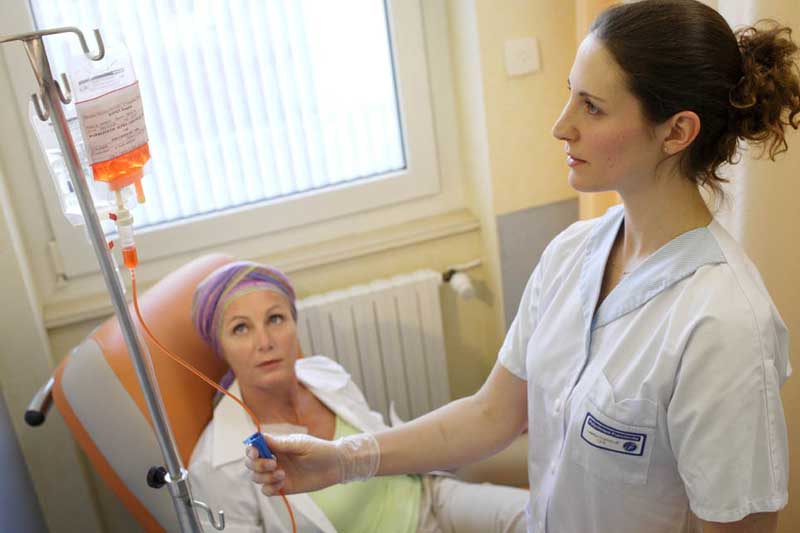
What is chemotherapy?
Also called “chemo,” it’s a way to treat cancer that uses drugs to kill cancer cells.
It targets cells that grow and divide quickly, as cancer cells do. Unlike radiation or surgery, which target specific areas, chemo can work throughout your body. But it can also affect some fast-growing healthy cells, like those of the skin, hair, intestines, and bone marrow. That’s what causes some of the side effects from the treatment.
What does chemotherapy do?
It depends on the kind of cancer and how far along it is.
Cure: In some cases, the treatment can destroy cancer cells to the point that your doctor can no longer detect them in your body. After that, the best outcome is that they never grow back again, but that doesn’t always happen.
Control: In some cases, it may only be able to keep cancer from spreading to other parts of your body or slow the growth of cancer tumors.
Ease symptoms: In some cases, chemotherapy can’t cure or control the spread of cancer and is simply used to shrink tumors that cause pain or pressure. These tumors often continue to grow back.
How is chemotherapy used?
Sometimes, it treats cancer by itself, but more often it’s used in combination with:
Surgery: A doctor removes cancerous tumors or tissue, or organs contaminated with cancerous cells.
Radiation therapy: A doctor uses invisible radioactive particles to kill cancer cells. It may be delivered by a special machine that bombards parts of your body from the outside, or by putting radioactive material on, near, and even inside your body.
Biological therapy: Living material in the form of bacteria, vaccines, or antibodies are carefully introduced to kill cancer cells.
Chemotherapy may be used to
-
Shrink a tumor before radiation therapy or surgery -- called neoadjuvant chemotherapy
-
Destroy any remaining cancer cells after surgery or radiation therapy -- called adjuvant chemotherapy
-
Make other therapies (biological or radiation) more effective
-
Destroy cancer cells that return or spread to other parts of your body
Nutritional recommends for Cancer Patients During Chemotherapy
It is recommended that you eat lightly on your chemotherapy day. Eating small portions slowly and every few hours seem to work best. Avoid skipping meals on these days and eating fatty, greasy or spicy foods.
What do I eat before going to chemotherapy?
Light, bland foods seem to work best. Some examples of choices are:
-
Plain or Fruited yogurt
-
Fresh fruit and cottage cheese
-
Poached egg and toast
-
Toasted bagel with a small amount of peanut butter
-
Cereal and milk (try Lactaid® milk, or Soy milk, if lactose intolerant)
-
Chicken rice soup with saltine crackers
During chemotherapy take a small, bland snack with you. You can try the above foods as well as snack on low acid juices (apple, grape, and fruit nectars), liquid yogurts, fruits such as bananas, and crackers. Bring a water bottle and fill it with your favorite beverage (avoid acidic foods which may be irritating to your digestive tract).
What do I eat after chemotherapy and for the next few days?
-
Eat small meals and snacks throughout the day (aim for 5-6 smaller meals rather than 3 large meals).
-
Eat lower fat, blander foods!
-
Try colder or cool foods – these give off less odor and aroma and are especially important if you feel nauseous. Hot foods can have a more pronounced odor, therefore causing an aversion to certain foods.
-
Drink fluids frequently—this will prevent dehydration and remove some of the byproducts of the chemotherapy. Water is the best, but there are other sources of fluids such as:
-
Apple and grape juice
-
Fruit nectars
-
Low-salt broth
-
Clear soups
-
Gatorade
-
Popsicles and sherbet
-
Gelatin
-
Herbal teas, such as ginger and mint
-
Weak black teas
-
-
Take your anti-nausea medication as prescribed by your medical team.




